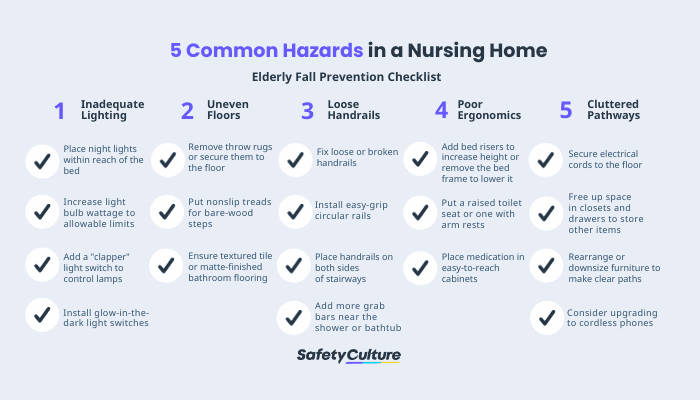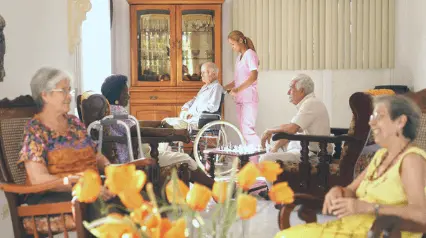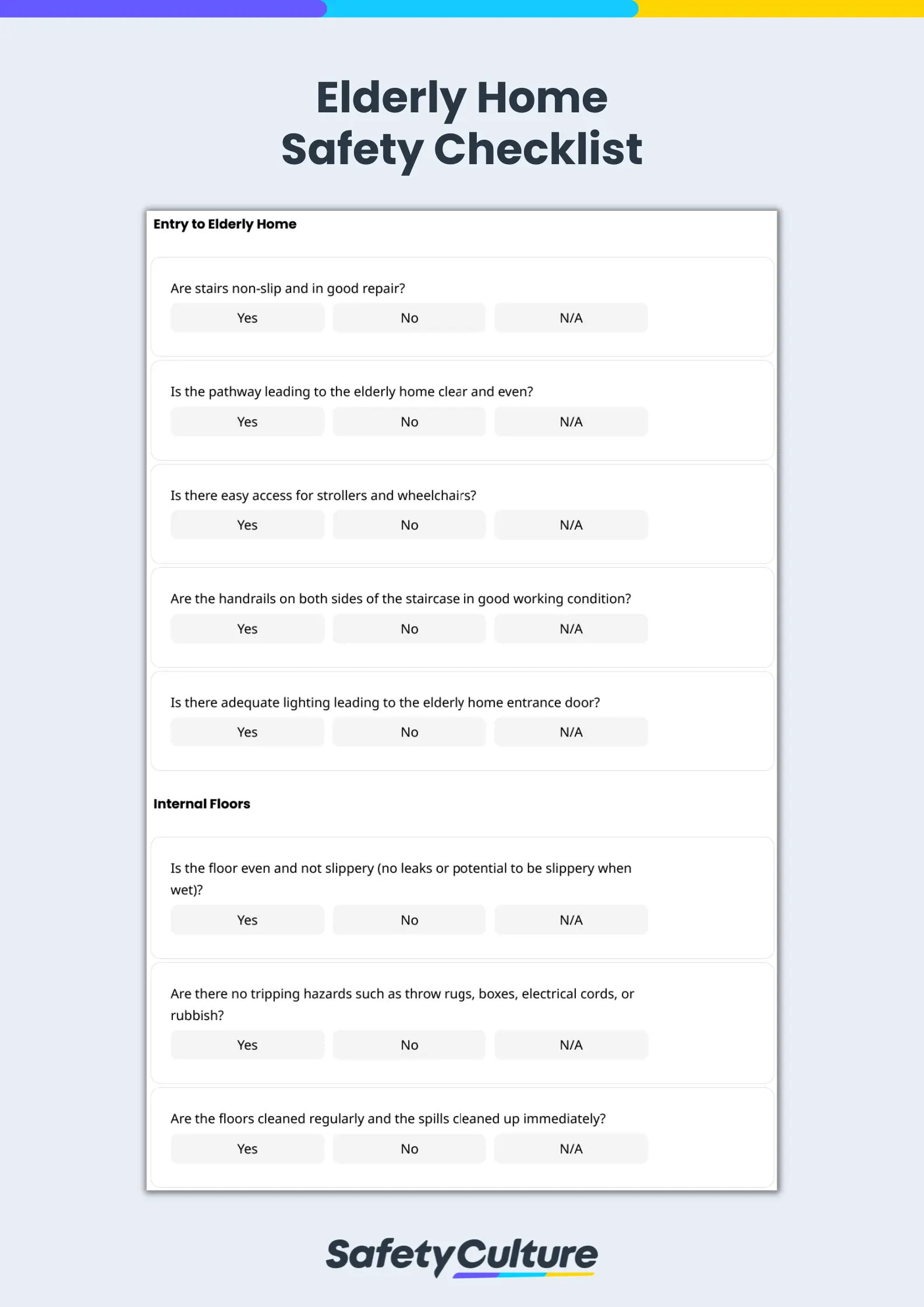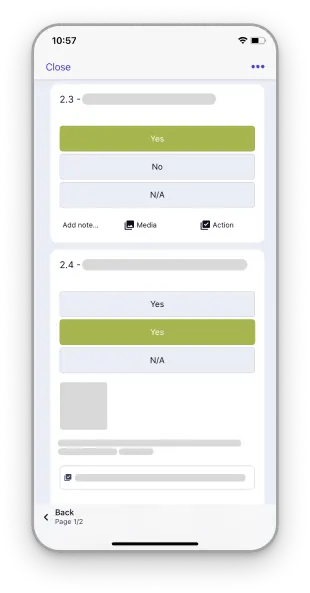What is an Elderly Home Safety Checklist?
An elderly home safety checklist is a tool used by nursing home supervisors and aged-care workers to identify and mitigate environmental hazards within the facility, such as uneven floors, torn carpets, and loose handrails. Regular use of elderly home safety checklists can help implement an effective elderly fall prevention program in nursing homes and prevent avoidable falls among older adults.
Why use Elderly Home Safety Checklists?
Taking advantage of mobile-ready elderly home safety checklists empowers nursing home staff to proactively prevent common accidents among the elderly, build a patient safety culture, and increase patient-perceived safety.
Elderly Fall Prevention Program: Elements of Effectiveness
The Centers for Disease Control and Prevention (CDC) reports that one out of four older adults in the US falls each year. If current elderly fall rates continue to rise, 7 fall deaths can happen every hour by 2030. Nursing home supervisors and aged-care workers play a vital role in preventing falls among the elderly through fall prevention programs. Here are the elements of an effective elderly fall prevention program you can implement in a nursing home:
-
Evidence-based Fall Prevention Programs
An effective elderly fall prevention program is based on the goals of the nursing home, the caregiver, and the needs of the elderly. Here is a list of evidence-based fall prevention programs and effective single interventions. To know if the current fall prevention program works and has achieved desired results, evaluate it using this fall prevention program checklist.
-
Updated Fall Risk Assessments
According to a Johns Hopkins University study, falling once doubles the chances of falling again. Since some older adults are more likely to fall than others, aged-care workers should perform regular fall risk assessments. Follow the Morse Fall Scale (MFS) in assessing the likelihood of falling and prioritize nursing care according to risk ratings.
-
Scheduled Safety Inspections
Most fall risk factors such as lower-body weakness, use of medicines, and vision problems, are inherent during old age. However, fall risk factors related to environmental hazards can be easily avoided by conducting daily safety inspections in the nursing home. Through completed audits over time, nursing home supervisors can anticipate recurring problems and immediately resolve them before they occur.
5 Common Hazards in a Nursing Home
A US Department of Health and Human Services Chartbook states that environmental risk hazards play a role in about half of all falls. Here are the 5 common hazards usually present in a nursing home and what nursing home supervisors and aged-care workers can do to mitigate them:

Elderly Home Safety Steps
Observe the following steps to keep elderly homes safe for occupants:
- Inspect entries and floors – Since one of the most common injuries for elderly people is falls and slips, perform a check of the entryways, pathways, and floors. Make sure that there are no tripping hazards and free the floors from potential slippery materials.
- Ensure adequate lighting – Confirm that there’s an appropriate level of lighting in the interior and exterior areas of the facility. Create a plan that enables quick identification and immediate repair of broken lights, damaged light fittings, and defective light switches.
- Check facility areas – Individually inspect all the areas of the facility to make sure that they are free from hazards and are all working properly. These spots include grounds, hallways, exits, doors, windows, ventilation systems, furniture, fittings, and shelves, then determine if the level of noise is acceptable.
- Test electrical equipment – Check the electrical equipment and supplies present in the facility. Test the outlets, switches, safety switches, power boards, and extension leads to confirm that they are fit for elderly homes and are all working properly.
- Review emergency precautions – Regularly examine the components of emergency precautions and ensure that authorized people are on the same page with the emergency plans. Replenish first aid supplies as needed and properly label hazardous chemicals present in the facility.
- Secure restrooms and kitchen – Aside from the other components of the facility, hazardproof the restrooms by regularly cleaning and keeping them in a good condition. Also, perform consistent inspections of the kitchen area and kitchen amenities to make sure that they are safe, well-maintained, and in proper working order.



